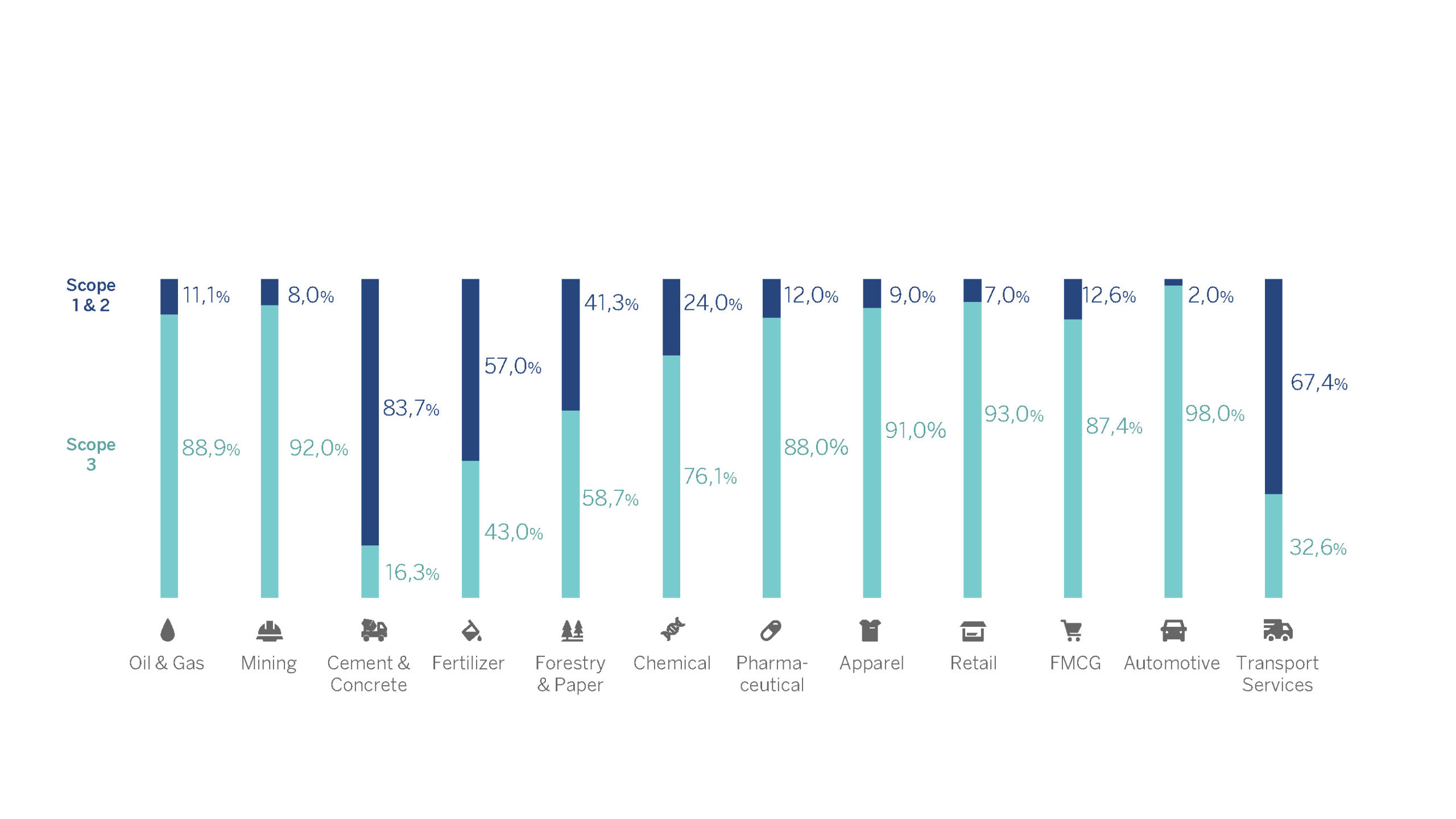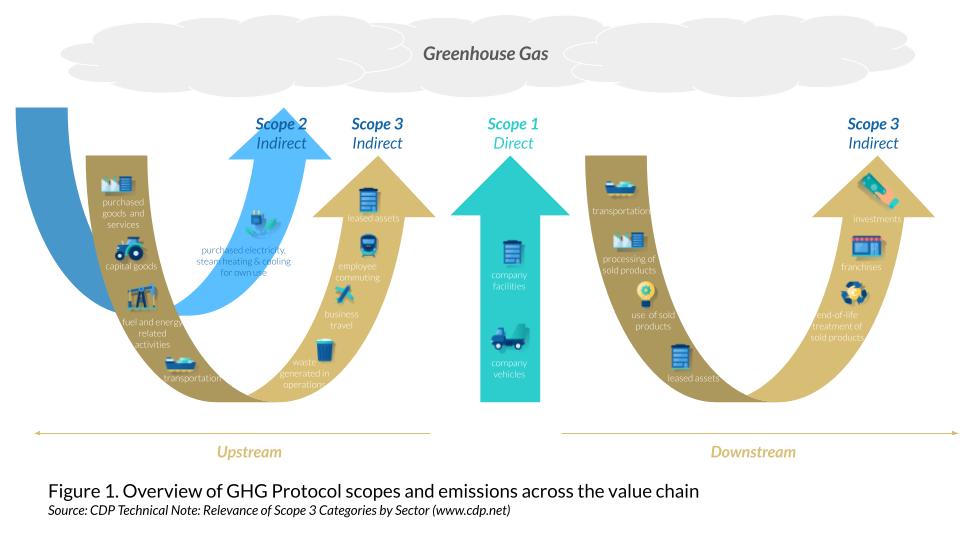
Treasurers called into action to reach companies’ Net Zero targets

It is undeniable that ESG is increasingly important for key stakeholders and it affects all aspects of business, from actual operations to the network of suppliers. This is evidenced by the fact that currently more than a-third (752) of the 2,000 world’s largest publicly traded companies have net zero targets, whereas in 2020 it was only a fith1. However, it is important to highlight that out of these 752 companies only one third cover Scope 3 emissions and only half of them have these targets embedded in their annual reports, while the remaining companies just announced a target without a clear strategy of implementation.
The absence of Scope 3 commitments and a clear strategy can be explained by a few reasons: (1) the difficulties to identify the magnitude of GHG emissions from the value chain in order to set a baseline; (2) the struggling to identify GHG reduction opportunities; (3) the initial costs associated to it, and (4) the lack of engagement from the entire value chain to track performance.
Nevertheless, there is an urgency for value chain decarbonisation strategy and it has been incentivised by three factors. Firstly, the regulations coming from the European Union to reduce emissions, switch to sustainable packaging, transform manufacturing processes, promote green energy and develop circularity imply necessary changes across all segments of the value chain in the different industries to ensure compliance with the EU Green Deal.
Secondly, in order to achieve these announced goals, the companies need to improve traceability and transparency across their value chains, including suppliers’ emissions and other ESG KPIs related to social and governance aspects.
Thirdly, B2C companies tend to have a larger share of Scope 3 emissions, therefore have a bigger challenge to comply with their commitments and are strongly pushing for ESG initiatives across the value chain, from raw materials to their end users, affecting therefore the B2B companies as well.

In the Food & Beverage industry the Scope 1 and 2 emissions account for 12.6% of total GHG emissions, and of the remaining 87.4% of Scope 3 emissions are mostly coming from Purchased Goods and Services, which are mainly from agricultural production. The same happens in the Apparel & Footwear industry, where it is estimated that 75% of total emissions are originating from purchased goods and services. On the other hand, the Automotive industry has an elevated proportion of Scope 3 emissions, being 84% originated from the use of sold products, so more on the downstream than on the upstream.
This is completely different in B2B industries such as in the Cement industry, where Scope 1 accounts for almost 80% of total GHG emissions due to the processes that occur within production. The Steel industry is another example, where the direct emissions account for 67%, very similar to the Transport Services sector.
Companies that are approaching Scope 3 GHG emissions are mostly doing it by addressing upstream activities instead of downstream activities, applying different strategies to reach a supply chain decarbonisation depending on the level of maturity of the value chain regarding sustainability. For the less matured supply chains, it is important to build transparency and collect data to have a baseline of GHG emissions. On the other hand, in more matured supply chains, such as the Apparel industry, players have launched big bets tackling long-term decarbonisation interventions as investments in circular material recycling.

Transversal involvement of all company departments beyond the procurement department is essential in order to meet the net zero targets established. This is where we call the Financial and Treasury department to action through a powerful and efficient tool such as the Supply Chain Finance programs.
Sustainability Linked Supply Chain Finance (SCF) programs apply a pricing discrimination to reward those suppliers that are engaged in reducing its GHG emissions. This distinction can be done in several phases. For instance, on a first phase by asking the suppliers to be transparent regarding their GHG emissions, rewarding those that can demonstrate they have a GHG emission certificate. Once this is obtained from suppliers, the level of requirements should be more demanding, rewarding those suppliers that have a GHG reduction plan and that said plan is being accomplished year after year.
Through a Sustainability Linked SCF program the company is able to: (1) set a baseline of Scope 3 GHG emissions in case it does not have it in place yet; (2) track performance of GHG emissions and other ESG KPIs; (3) encourage suppliers to invest in decarbonisation plans and (4) retain sustainable suppliers.
This seems very ambitious, but if one-third of the 752 companies that have committed to Net Zero targets including Scope 3 emissions are willing to reach it, they need engagement of the suppliers in order to have traceability, attract effort of suppliers on looking for alternatives to reduce their emissions and, if necessary, select to work with those suppliers that are aligned with the buyer’s reduction target.
Suppliers that accept and engage in Scope 3 emissions reduction will consequently transfer these requirements to their suppliers and so on, forming a cascade effect. This is the way that a sustainable transformation will be seen in the value chain, moving from B2C to B2B industries, counting with the support of banks to make it possible.